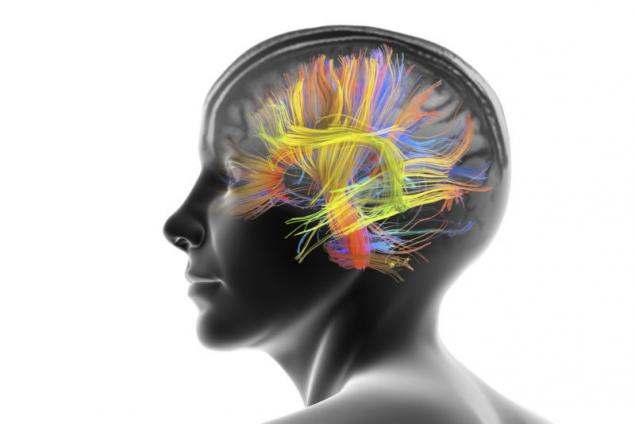773
The brain and adolescent behaviour
Whether the period of life between childhood and adulthood is a time of inevitable rebellion of the younger generation?
Does the immaturity of the teenage brain is the cause of the immature behavior of adolescents? The correlation of pubertal and adolescent periods? And anyway, what is adolescence (by which I here understand the period of life from 12 to 18 years)?

Puberty as a significant event that distinguishes adolescents from children, apparently was the reason that long time in the study of adolescent development, they were compared with children, and only recently the interest of scientists has shifted to a psychological transition from the adolescent stage to adulthood. According to Laurence Steinberg (Steinberg, L., 2009), this change of interest is due to new research showing continued brain maturation in late adolescence and early adulthood.
Adolescence and puberty cannot be identified
Under pubertatnom refers to the process of age development leading to the achievement of reproductive maturity.
Adolescence is a two-phase transition, consisting in the transition from childhood to adolescent stage and the transition from it to the stage of adulthood. It is a period of multiple and overlapping reforms, changes in the physical, psychological and social development, some of which depend on the puberty, while others are not.
For example, puberty heightens emotional excitability, increases the need for sensation-seeking and attitude to remuneration, but, apparently, practically does not affect the development of cognitive abilities (in particular, cognitive control) adolescents. These changes multideterminant, and despite their dependence on cultural context and socio-economic conditions (Epstein, R., 2007), appears to have deep biological roots in our evolutionary past (Spear, P. L., 2009 ).
In biology this transitional period, there is remarkable interspecies similarity, including not only many, common to mammals, the hormonal and physiological changes associated with pubertatnom, but typical of adolescence changes the brain.
So, teenagers from the class of mammals show some typical age ways of responding to the environment:
These community behavior in different species of mammals have been preserved in the course of evolution, apparently because of their adaptive value.
For example, social interactions with peers can help develop social skills in an environment different from home, to guide the selection of behaviors to facilitate the transition to independence from family and to allow simulation and exercise patterns of behavior typical of adults (Spear, P. L., 2009).

Risky behavior also performs a number of adaptive functions despite the potentially high price for it, manifested in increased mortality rates of adolescents not only homo sapiens but other species.
These adaptive functions are usually classified as:
1) increase the probability of reproductive success in males of many different species, including humans, under certain circumstances;
2) ability to store additional resources to explore adult and freedom to take and overcome the challenges of the environment;
3) promotion of emigration from the home environment during puberty, preventing genetic inbreeding and reduced viability of offspring due to greater expression of recessive genes (Spear, P. L., 2009).
Animals reaching reproductive maturity, essentially equivalent to the attainment of adulthood. Mammals produce offspring almost immediately after puberty, and until recently so did members of our species – Homo sapiens.
However, human development is determined not only by species but also a social programming (A. A. Alekseev, 2010). Hence the perception of the duration of adolescence as a separate stage of development may vary depending on cultural, historical and socio-economic conditions.
Thus, some researchers believe that the teenage population is the regulator of the magnitude of the employment resources that help meet the workforce needs: adolescence is considered as short transition stage to adulthood, when the demand for labor is also large, and Vice versa, as the prolonged period of immaturity, requiring substantial support, and advanced education when unemployment is high (Enright, R. D., Levy Jr., V. M., Harris, D., & Lapsley, D. K., 1987).
Interestingly, a similar dependence is observed not only in the human world. Even the bees, immature bees (which typically care for the brood in the hive) Mature earlier than usual, when too few Mature bees to meet the demand of normodipine for the hive, while their maturation is delayed when Mature bees-foragers in abundance (Spear, P. L., 2009). However, in the latter case it is more correct to talk about changing the duration of puberty, which coincides with the adolescent stage in the development of bees.
Moreover, social effects are subject to even a timeline of puberty, despite its more stringent internal determinism.
For example, girls enter into puberty earlier in polygynous societies than in monogamous cultures with stressful rites of pubertal transition than in cultures without severe ceremonies of initiation, and in cases when they are raised in families with severe conflict (Spear, P. L., 2009).
Relative chart of puberty within the adolescent period, detects a significant interindividual variations, which in themselves are of great importance for a particular teenager.
Early puberty, as has been shown in numerous studies, is associated with the increase in various adverse consequences for boys and girls, including early use of alcohol and other psychoactive substances, higher risk drinking in middle school, earlier and riskier sexual behavior and increased delinquency.
However, it is known that, at least in societies that internalize the cultural norms, values and technology of the West, accelerated puberty boys generally appreciated by adults, while leading the chart of puberty in girls is at least a cautious attitude on the part of adults (a phenomenon Lolita).
Traditionally it was believed that sex differences in the structure and functions of the brain are established early in life due to "organizational" effects of the presence or absence of sex hormones and the subsequent increased level of sexual Gomonov just helps activate these latent sex differences. However, recently, there is strong evidence that the developing brain remains sensitive to "organizational" effects of sex hormones, starting with the beginning of life and until the end of adolescence, and the normal increase in levels of sex hormones during pubertal period not only causes typical maturity "activation" effects, but also launches the second "organizational" period is a period of further differentiation of the brain with the goal of ensuring final maturation prespecified necessary to maintain behavior consistent with sexual dimorphism (Spear, P. L., 2010).
Puberty is correlated with many behavior changes, including, of course, the rise of sexual activity and respective interests. The patterns of behavior that, presumably, is affected by puberty, are typical of adolescence, changes in the level of overall excitement (arousal) and appeal socioemotional incentives.

In studies comparing adolescents at different stages of puberty, relation of the stage of sexual maturation with a variety of typical teen behaviors, including increased conflict with parents (Steinberg, L., 1988), later bedtimes and increased risky behavior, including alcohol and drug use (Spear, P. L., 2009).
The teenage brain is an unfinished product. During adolescence there are changes at the molecular, cellular, anatomical and functional levels of the brain, which are characterized by heterotopically, heterochroneity and heterosynaptically.
First of all, is a large-scale pruning (elimination) of synapses. Between neurons produces many more synapses than will be saved in the end. In the early stages of life the overproduction of synaptic connections is accompanied by their elimination in order to eliminate non-functioning synapses, while preserving the existing – the process, how long ago it was thought that help to align the connectivity of the brain with the requirements and characteristics of the environment.
Pruning of synapses also resumed in adolescence, and at this time in certain areas of the brain eliminates nearly half of the synaptic connections.
Taking into account that some of these lose synapses include linkages established much earlier in the life of the organism, it seems unlikely that this reduction simply reflects the much delayed elimination of nonfunctional synapses.
Indeed, this reduction is extremely selective, i.e., more pronounced in cortical than in subcortical areas, and more evident in the case of excitatory (glutamic) inputs to the cortex than for the inhibitory (GABA) synapses.
This reduction in the period of adolescence may contribute to fine-tuning the connectivity of the brain necessary for the occurrence of typical adult networks of brain activity, perhaps even the final provides increased opportunity for the brain to be built environment (Spear, P. L., 2000; 2009).
The myelination is an important process of building of the brain during adolescence. Although the process of myelination begins early in life and continues into adulthood, its production increases significantly during adolescence. Relatively long axons that connect distant regions of the brain become particularly important target of the process of myelination, and, as a result, the input signal faster and with more weight compared to a more local signal, demielinizirutaya relationships (Spear, P. L., 2000).
Occurring in adolescence, reduction of synaptic connections and an increase in the proportion of more efficient (less energy) myelinated axons makes a significant contribution to reducing the need for brain energy and process optimization in terms of thermodynamics. And to the extent that the education and fine tuning of neural networks requires the involvement of fewer neurons for specific tasks, there is additional reduction in energy consumption for the brain.
Changes in the teenage brain are regionally specific. The volume of gray matter in the cortex over time changes, in General, in accordance with the inverted U-shaped pattern, first increasing until reaching a sloping plateau, and then declining. This temporal pattern of regional-specific, with a plateau appearing usually in early sensory and motor areas than in the prefrontal cortex and other associative areas of the cortex serving are thought to be relatively more advanced cognitive functions. The final result – a significant increase in the relationship of white matter to gray in adolescence, varying greatly in timing in different areas of the cortex (Spear, P. L., 2000).
Changes in the volume of gray matter have also been observed in adolescence in subcortical areas, but usually they are less pronounced than changes in the cortex. Areas in which there is a reduction of gray matter that include the dorsal striatum (caudate nucleus) and other regions of the basal ganglia and also ventral striatum (nucleus accumbens). On the contrary, the volume of the gray matter of the amygdala and, to some extent, the hippocampus increases during adolescence and early adulthood. These changes should not have to speak if they are not correlated with many cognitive and behavioural changes in adolescence. For example, in our context, we can mention the relationship between control pulses and the volume of the prefrontal cortex and basal ganglia (Spear, P. L., 2009).
Although usually caused by experience changes in the brain in relation to early development phases is increasing evidence that neuroplasticity remains significant in some areas of the brain in the teenage period. Such plasticity may represent relatively delayed "developmental programming" of the brain, potentially providing continuous opportunities for the teenage brain to be "out-fashioned and customized" in accordance with the interests, activities and experiences of a teenager.
One example of residual brain plasticity cited above: preservation of sensitivity to "organizational" effects of sex hormones in certain areas of the brain in adolescence.
There are several neural mechanisms by which plasticity may persist in adolescence. Pruning of synapses and formation of new synapses, synaptic reorganization (distribution and elimination of axonal (presynaptic) endings for a few minutes) is much faster than in Mature neurons. The rate of neurogenesis is 4-5 times higher in adolescents than adults (Spear, P. L., 2009).
The teenage brain is, apparently, not just a collection of regions that reach maturity at different times, but in a sense, can be described as the brain, which responds differently to stimuli than a Mature adult brain. Taking into account the magnitude of the neuronal changes observed during adolescence in brain regions critical for the mediation and modulation of sensitivity to rewards and aversive stimuli, perception and expression of emotions, control of inhibition and impulsivity, a measure of adolescent risk behavior seems inevitable.
Teens looking for rewarding and aversive stimuli differently than adults. Their neuronal and behavioral sensitivity to rewards, especially strong, often looks high, and at the same time teenagers can sometimes seem less reactive in the period of anticipation of reward and, possibly, when receiving weak rewards. Along with these seemingly exaggerated reactivity to reward, adolescents often appear to be less sensitive to aversive stimuli and consequences. There are indications that the teenage propensity for demonstrations of accented reactions to intense, appetitive incentives, but weakened by reactivity to aversive stimuli may additionally worsen in the social (and possibly stressful) situations.
Such hedonic shifts can encourage risky behavior, especially in the presence of peers due to its thrilling and stimulating effects, and can result in permanent involvement in risky, when the prior classes were stimulating, but without catastrophic consequences. Such typical teenagers hedonic shifts to greater reward and weakened aversive qualities apparently extend to drugs and alcohol, and, at least in the case of alcohol can be combined with genetic and other environmental risk factors, contributing to fairly high consumption, leading to problematic patterns of alcohol use and dependence in vulnerable individuals.
There are a number of potential consequences, consideration of adolescence as a time of shifts in hedonic sensitivity to high fees and weakened aversive response.
One example is the evidence that vulnerable adolescents, appears to be even more resistant to the aversive effects of alcohol, which generally serve as a signal to limit the consumption than normal teenagers. This is important information for inclusion in the anti-alcohol program, taking into account that boys (and probably many adults), seem to associate the ability to “keep up” with resistance to aversive alcohol consequences, but not with increased likelihood of developing alcohol problems and dependence.
As another can be called measures of restriction of the rights and responsibility of adolescents in social situations of potential risk of harm to others (Spear, P. L., 2009).
In the end, than to try by all means to eliminate the risky behavior of adolescents – a strategy that has not brought success to the present time (Steinberg, 2008), it is better to try to reduce the costs of risky adolescent behavior by restricting access to particularly hazardous possibilities of manifestation of risk, while allowing access to risky and exciting occupations in conditions that minimize the likelihood of harm.

In my opinion, of all the varieties of problem behavior risky behavior in adolescents should be given special attention. Nominated by a number of cognitive and neurobiological hypotheses to explain why adolescents are prone to suboptimal choice behavior.
One hypothetical model puts risk behavior dependent on cognitive development (Steinberg, L. 2005). It is considered that cognitive development during adolescence is associated with gradually increasing efficiency of cognitive impulse control and affective modulation. Increased activity in the prefrontal regions (as an indicator of maturity) and the weakening of activity in irrelevant brain regions is regarded as a neurobiological explanation for the behavioral changes associated with adolescence.
This General model of improving cognitive control and emotional regulation with maturation of the prefrontal cortex (more precisely, the ventromedial region) assumes a linear function development from childhood to adulthood. The basis of this model based on research using several well-known neuropsychological methods (the Iowa Gambling Task, Stroop test, etc) with simultaneous brain scan, giving fairly consistent results. This model is closer to the General concept of piaget explaining the emotional problems of imperfect cognitions (“the Sleep of reason produces monsters”).
However, as the statistics on problem behavior and mortality of adolescents, observed in adolescence suboptimal decisions and actions reflect the nonlinear change in behavior, distinct from childhood and adulthood. If the immaturity of the prefrontal cortex served as the basis for suboptimal choice behavior and increased emotional reactivity in adolescence, then the younger children, whose prefrontal cortex and cognitive abilities are developed even less, should look at their behavior is very similar to the Teens or worse. Thus, only the immaturity of the prefrontal functions, it is impossible to explain risky teenage behavior.
Another model (Casey, B. J., Getz, S., and Galvan, A., 2008; Somerville, L. H., Jones, R. M., and Casey, B. J., 2010; Casey, B. J., Jones, R. M., and Somerville, L. H., 2011) presumably explains the nonlinearity in the development due to the fact that breeds risky behavior and impulsivity, which are usually used as synonyms in the context of adolescent development and examines the development of the prefrontal cortex in conjunction with development of the subcortical areas of the limbic system (in particular, the nucleus accumbens and the amygdala) involved in choice under risk and modulating emotional reactivity.
In accordance with this model for the adolescent period is characterized by an imbalance of the limbic and prefrontal effects (the prevalence limbic), whereas in children both of these systems are not sufficiently developed yet (therefore kasibulan), and in adults they are fully developed and integrated ascending and descending connections in a single complex system.
The advantage of this model is that it does not conflict with data about what Teens are able to understand and argue the risks of behaviors in which they are involved (Reyna, V., and Farley, F., 2006).
The fact is that in emotionally-Laden situations is more developed limbic system of adolescents takes precedence over the prefrontal control system. And when a bad decision is made in an emotional context, the adolescent may know better solution, but the expression of emotional context through the limbic influence shifts its behavior in the opposite direction from the optimum direction.
This model can be easily extended, for example, allows to consider along with the age and individual differences in terms of temperament/personality (impulsivity, anxiety, emotional reactivity, etc.).
Finally, this model is in good agreement with the data obtained in studies of a number of components of risk behavior of adolescents. In General, this model is closer to General psychological concepts of Freud, according to which strong emotions are caused by cognitive distortion or even blocking of cognition as a call to action.
Of course, such models are useful because we can hope that eventually they will have an impact on social policies concerning adolescents and its implementation in pedagogy, social work and justice. At the same time, these models are simplistic in nature, though, and continue to evolve in modern research using MRI technology.
At present, large expectations are associated with the possibilities of imaging techniques (structural and functional MRI, and diffusion tensor imaging (DTV)) to the study of brain mechanisms of human behavior and consciousness. The number of publications describing studies using these methods, is growing like an avalanche. We can agree with Vilayanur Ramachandran that the fashion for imaging techniques due in part to economic reasons: when you have spent millions of dollars on cutting-edge imaging, presses on you need to constantly use. Indeed, “when you have all of the tools, only a hammer, everything begins to seem nails” (Ramachandran V., 2012, C. XXII).
However, existing imaging techniques have two serious limitations. First, a private and possibly, over time, can be overcome lies in the fact that the smallest unit of analysis in studies of human brain imaging methods – voxel (volume element of the image) – contains estimated up to 5.5 million brain cells (neurons) and from 0.5 to 5.5 billions of nerve connections (synapses), 22 km of dendrites and 220 km of axons (Logothetis, N. K., 2008, p. 875). Such resolution is insufficient to obtain precise information on the molecular, neuroanatomical and electrophysiological processes associated with the development of specific neural and synaptic systems, namely higher sensitivity of the instruments and necessary for the further development of neurobiological models of adolescent brain and behavior.
The second limitation principle. By their very nature, studies using computed tomography are correlation, showing that activity in the brain associated with a certain behavior or emotion. Therefore, no study of brain imaging methods (structural and functional) in principle not able to identify the brain as the causal agent, regardless of which areas of the brain are observed. Psychophysiological problem nobody has managed to resolve.
Generally speaking, there are researchers who believe the statement “the immaturity of the teenage brain is the reason for the immature behavior of teenagers” is a myth, developed on the basis of studies of the brain by means of MRI, which sometimes shows that when solving problems in adolescents and adults use their brains differently. This myth fits well in the larger myth, namely, that Teens are inherently incompetent and irresponsible. Stanley Hall gave life to this myth in 1904, published his two-volume work “Adolescence”.
Let's look at the argument of this position one of the serious researchers, Robert Epstein (Epstein, R., 2007), a Harvard graduate, one of the companions of B. F. Skinner. First of all, Epstein doubts that the “teenage brain” and problematic behavior of adolescents is a universal phenomena. Indeed, at least in societies that internalize the cultural norms, values and technology of the West, teenagers find some signs of distress. For example, in the US, arrests for most crimes for a long time kept in the district 18 years, and for some crimes, such as arson, the peak age is much lower. On average, American parents and adolescents in conflict with each other 20 times a month. According to a national study, 2004 18 years peak age of depression among American citizens.
However, Epstein is convinced that all these problems are not inevitable. As proof of his position he cites two studies.
In 1991 anthropologist Alice Schlegel and psychologist Herbert Barry III conducted a review of studies of Teens in 186 preindustrial societies. Conclusions:
The more important results obtained by anthropologists Beatrice Whiting and John Whiting:
For example, deliquescent was not a problem among Inuit living on Victoria island (Canada), before the advent in 1980 of the television. By 1988 the Inuit had created the first permanent police station to deal with a new problem.
Robert Epstein's own research came to the conclusion that “the problematic behavior of adolescents in the United States is the result of “artificial extension of childhood” after the puberty.
In this thesis Diane Dumas, made under the direction of Epstein, obtained a positive correlation between the degree of infantilization of teenagers and frequency (and power) of symptoms of psychopathology.
The second line of arguments of Epstein, logically continuing the first, is that the characteristic features of the teen brain are the result of social influences, not a cause of problem behavior among adolescents.
He wondered how generally legitimate to say that the cause of human behavior are anatomy of the brain or its activity? The answer is negative.
Here he solidarities with the opinion of Valenstein Elliot (Elliot Valenstein), Professor of psychology and neuroscience, which claims that we are making a logical error, when placed on the brain responsibility for almost any behavioral act, especially when drawing conclusions from studies with brain scans. Of course, any behavior or experience should be reflected (“encoded”) in brain structure and activity. If someone's acting out or experiencing a bout of depression, his brain should have the “wiring” (wiring) to reflect these behavioral acts. However, this “wiring” is not necessarily the cause of the observed behavior or feelings.
Indeed, a significant body of research shows that emotions and the subject's behavior continuously change brain anatomy and physiology. Stress creates hypersensitivity of neurons that produce dopamine that remain even after their removal from the brain. Enriched environment produces more neural connections. Epstein said that, in this respect, meditation, diet, exercise, training, and virtually all other activities alter the brain, and recent studies shows that Smoking produces brain changes similar to those caused in animals under the influence of heroin, cocaine or other addictive substances.
Therefore, if adolescents behave in a risky, overly emotional or aggressive, we will probably find corresponding chemical, electrical or anatomical features in their brains.
But the question remains: does the brain causes such behaviour, or such behaviour changes in the adolescent brain? Perhaps some other factors, such as the way our culture treats teenagers, are the cause of problematic behavior in adolescents, and the relevant features of their brain. The concept of R. Epstein is closest to the theory of behaviorism.
In my opinion, the hypothesis that genes of the individual, its environmental history and its own behavior shape the brain during development (Alekseev A. A., 2010), does not refute the hypothesis of the brain as a causal agent of behavior, but rather is in a complementary relationship with her and, no doubt, deserves attention. We still know so little about the brain and its development that is not rejecting any idea and to refute any evidence concerning a developing brain and behavior.
I would like to conclude with a quote from the book Vilayanur Ramachandran:
“Science needs a diversity of styles and approaches. Uniformity begets weakness: blind spots in theory, the frozen paradigm, mentality echo chambers and cults of personality. The diversity of actors is energetic tonic against these ailments. Science only wins, because it includes abstractions floating in the scattered professors, and obsessed with control reinsurers, and quarrelsome petty drug statistics, and natural-born debaters, advocates of the devil, and realistic bukvostaw considered only with reliable data, and naive romantics, brave enough to risky, vasocostrittore businesses and often stumbling on the way.” (Ramachandran, V., 2012, C. XXI–XXII).published
Author: A. A. Alekseev
P. S. And remember, only by changing their consumption — together we change the world! ©
Source: //developpsy.ru/publ/mozg_i_povedenie_podrostka_racionalnost_protiv_irracionalnosti/1-1-0-8
Does the immaturity of the teenage brain is the cause of the immature behavior of adolescents? The correlation of pubertal and adolescent periods? And anyway, what is adolescence (by which I here understand the period of life from 12 to 18 years)?

Puberty as a significant event that distinguishes adolescents from children, apparently was the reason that long time in the study of adolescent development, they were compared with children, and only recently the interest of scientists has shifted to a psychological transition from the adolescent stage to adulthood. According to Laurence Steinberg (Steinberg, L., 2009), this change of interest is due to new research showing continued brain maturation in late adolescence and early adulthood.
Adolescence and puberty cannot be identified
Under pubertatnom refers to the process of age development leading to the achievement of reproductive maturity.
Adolescence is a two-phase transition, consisting in the transition from childhood to adolescent stage and the transition from it to the stage of adulthood. It is a period of multiple and overlapping reforms, changes in the physical, psychological and social development, some of which depend on the puberty, while others are not.
For example, puberty heightens emotional excitability, increases the need for sensation-seeking and attitude to remuneration, but, apparently, practically does not affect the development of cognitive abilities (in particular, cognitive control) adolescents. These changes multideterminant, and despite their dependence on cultural context and socio-economic conditions (Epstein, R., 2007), appears to have deep biological roots in our evolutionary past (Spear, P. L., 2009 ).
In biology this transitional period, there is remarkable interspecies similarity, including not only many, common to mammals, the hormonal and physiological changes associated with pubertatnom, but typical of adolescence changes the brain.
So, teenagers from the class of mammals show some typical age ways of responding to the environment:
- increased desire for social interactions with peers,
- increased commitment to the search for new and risk
- higher level consummating behavior, usually involving increased consumption of food (along with teenage growth spurt) and the increased tendency to use alcohol and drugs.
These community behavior in different species of mammals have been preserved in the course of evolution, apparently because of their adaptive value.
For example, social interactions with peers can help develop social skills in an environment different from home, to guide the selection of behaviors to facilitate the transition to independence from family and to allow simulation and exercise patterns of behavior typical of adults (Spear, P. L., 2009).

Risky behavior also performs a number of adaptive functions despite the potentially high price for it, manifested in increased mortality rates of adolescents not only homo sapiens but other species.
These adaptive functions are usually classified as:
1) increase the probability of reproductive success in males of many different species, including humans, under certain circumstances;
2) ability to store additional resources to explore adult and freedom to take and overcome the challenges of the environment;
3) promotion of emigration from the home environment during puberty, preventing genetic inbreeding and reduced viability of offspring due to greater expression of recessive genes (Spear, P. L., 2009).
Animals reaching reproductive maturity, essentially equivalent to the attainment of adulthood. Mammals produce offspring almost immediately after puberty, and until recently so did members of our species – Homo sapiens.
However, human development is determined not only by species but also a social programming (A. A. Alekseev, 2010). Hence the perception of the duration of adolescence as a separate stage of development may vary depending on cultural, historical and socio-economic conditions.
Thus, some researchers believe that the teenage population is the regulator of the magnitude of the employment resources that help meet the workforce needs: adolescence is considered as short transition stage to adulthood, when the demand for labor is also large, and Vice versa, as the prolonged period of immaturity, requiring substantial support, and advanced education when unemployment is high (Enright, R. D., Levy Jr., V. M., Harris, D., & Lapsley, D. K., 1987).
Interestingly, a similar dependence is observed not only in the human world. Even the bees, immature bees (which typically care for the brood in the hive) Mature earlier than usual, when too few Mature bees to meet the demand of normodipine for the hive, while their maturation is delayed when Mature bees-foragers in abundance (Spear, P. L., 2009). However, in the latter case it is more correct to talk about changing the duration of puberty, which coincides with the adolescent stage in the development of bees.
Moreover, social effects are subject to even a timeline of puberty, despite its more stringent internal determinism.
For example, girls enter into puberty earlier in polygynous societies than in monogamous cultures with stressful rites of pubertal transition than in cultures without severe ceremonies of initiation, and in cases when they are raised in families with severe conflict (Spear, P. L., 2009).
Relative chart of puberty within the adolescent period, detects a significant interindividual variations, which in themselves are of great importance for a particular teenager.
Early puberty, as has been shown in numerous studies, is associated with the increase in various adverse consequences for boys and girls, including early use of alcohol and other psychoactive substances, higher risk drinking in middle school, earlier and riskier sexual behavior and increased delinquency.
However, it is known that, at least in societies that internalize the cultural norms, values and technology of the West, accelerated puberty boys generally appreciated by adults, while leading the chart of puberty in girls is at least a cautious attitude on the part of adults (a phenomenon Lolita).
Traditionally it was believed that sex differences in the structure and functions of the brain are established early in life due to "organizational" effects of the presence or absence of sex hormones and the subsequent increased level of sexual Gomonov just helps activate these latent sex differences. However, recently, there is strong evidence that the developing brain remains sensitive to "organizational" effects of sex hormones, starting with the beginning of life and until the end of adolescence, and the normal increase in levels of sex hormones during pubertal period not only causes typical maturity "activation" effects, but also launches the second "organizational" period is a period of further differentiation of the brain with the goal of ensuring final maturation prespecified necessary to maintain behavior consistent with sexual dimorphism (Spear, P. L., 2010).
Puberty is correlated with many behavior changes, including, of course, the rise of sexual activity and respective interests. The patterns of behavior that, presumably, is affected by puberty, are typical of adolescence, changes in the level of overall excitement (arousal) and appeal socioemotional incentives.

In studies comparing adolescents at different stages of puberty, relation of the stage of sexual maturation with a variety of typical teen behaviors, including increased conflict with parents (Steinberg, L., 1988), later bedtimes and increased risky behavior, including alcohol and drug use (Spear, P. L., 2009).
The teenage brain is an unfinished product. During adolescence there are changes at the molecular, cellular, anatomical and functional levels of the brain, which are characterized by heterotopically, heterochroneity and heterosynaptically.
First of all, is a large-scale pruning (elimination) of synapses. Between neurons produces many more synapses than will be saved in the end. In the early stages of life the overproduction of synaptic connections is accompanied by their elimination in order to eliminate non-functioning synapses, while preserving the existing – the process, how long ago it was thought that help to align the connectivity of the brain with the requirements and characteristics of the environment.
Pruning of synapses also resumed in adolescence, and at this time in certain areas of the brain eliminates nearly half of the synaptic connections.
Taking into account that some of these lose synapses include linkages established much earlier in the life of the organism, it seems unlikely that this reduction simply reflects the much delayed elimination of nonfunctional synapses.
Indeed, this reduction is extremely selective, i.e., more pronounced in cortical than in subcortical areas, and more evident in the case of excitatory (glutamic) inputs to the cortex than for the inhibitory (GABA) synapses.
This reduction in the period of adolescence may contribute to fine-tuning the connectivity of the brain necessary for the occurrence of typical adult networks of brain activity, perhaps even the final provides increased opportunity for the brain to be built environment (Spear, P. L., 2000; 2009).
The myelination is an important process of building of the brain during adolescence. Although the process of myelination begins early in life and continues into adulthood, its production increases significantly during adolescence. Relatively long axons that connect distant regions of the brain become particularly important target of the process of myelination, and, as a result, the input signal faster and with more weight compared to a more local signal, demielinizirutaya relationships (Spear, P. L., 2000).
Occurring in adolescence, reduction of synaptic connections and an increase in the proportion of more efficient (less energy) myelinated axons makes a significant contribution to reducing the need for brain energy and process optimization in terms of thermodynamics. And to the extent that the education and fine tuning of neural networks requires the involvement of fewer neurons for specific tasks, there is additional reduction in energy consumption for the brain.
Changes in the teenage brain are regionally specific. The volume of gray matter in the cortex over time changes, in General, in accordance with the inverted U-shaped pattern, first increasing until reaching a sloping plateau, and then declining. This temporal pattern of regional-specific, with a plateau appearing usually in early sensory and motor areas than in the prefrontal cortex and other associative areas of the cortex serving are thought to be relatively more advanced cognitive functions. The final result – a significant increase in the relationship of white matter to gray in adolescence, varying greatly in timing in different areas of the cortex (Spear, P. L., 2000).
Changes in the volume of gray matter have also been observed in adolescence in subcortical areas, but usually they are less pronounced than changes in the cortex. Areas in which there is a reduction of gray matter that include the dorsal striatum (caudate nucleus) and other regions of the basal ganglia and also ventral striatum (nucleus accumbens). On the contrary, the volume of the gray matter of the amygdala and, to some extent, the hippocampus increases during adolescence and early adulthood. These changes should not have to speak if they are not correlated with many cognitive and behavioural changes in adolescence. For example, in our context, we can mention the relationship between control pulses and the volume of the prefrontal cortex and basal ganglia (Spear, P. L., 2009).
Although usually caused by experience changes in the brain in relation to early development phases is increasing evidence that neuroplasticity remains significant in some areas of the brain in the teenage period. Such plasticity may represent relatively delayed "developmental programming" of the brain, potentially providing continuous opportunities for the teenage brain to be "out-fashioned and customized" in accordance with the interests, activities and experiences of a teenager.
One example of residual brain plasticity cited above: preservation of sensitivity to "organizational" effects of sex hormones in certain areas of the brain in adolescence.
There are several neural mechanisms by which plasticity may persist in adolescence. Pruning of synapses and formation of new synapses, synaptic reorganization (distribution and elimination of axonal (presynaptic) endings for a few minutes) is much faster than in Mature neurons. The rate of neurogenesis is 4-5 times higher in adolescents than adults (Spear, P. L., 2009).
The teenage brain is, apparently, not just a collection of regions that reach maturity at different times, but in a sense, can be described as the brain, which responds differently to stimuli than a Mature adult brain. Taking into account the magnitude of the neuronal changes observed during adolescence in brain regions critical for the mediation and modulation of sensitivity to rewards and aversive stimuli, perception and expression of emotions, control of inhibition and impulsivity, a measure of adolescent risk behavior seems inevitable.
Teens looking for rewarding and aversive stimuli differently than adults. Their neuronal and behavioral sensitivity to rewards, especially strong, often looks high, and at the same time teenagers can sometimes seem less reactive in the period of anticipation of reward and, possibly, when receiving weak rewards. Along with these seemingly exaggerated reactivity to reward, adolescents often appear to be less sensitive to aversive stimuli and consequences. There are indications that the teenage propensity for demonstrations of accented reactions to intense, appetitive incentives, but weakened by reactivity to aversive stimuli may additionally worsen in the social (and possibly stressful) situations.
Such hedonic shifts can encourage risky behavior, especially in the presence of peers due to its thrilling and stimulating effects, and can result in permanent involvement in risky, when the prior classes were stimulating, but without catastrophic consequences. Such typical teenagers hedonic shifts to greater reward and weakened aversive qualities apparently extend to drugs and alcohol, and, at least in the case of alcohol can be combined with genetic and other environmental risk factors, contributing to fairly high consumption, leading to problematic patterns of alcohol use and dependence in vulnerable individuals.
There are a number of potential consequences, consideration of adolescence as a time of shifts in hedonic sensitivity to high fees and weakened aversive response.
One example is the evidence that vulnerable adolescents, appears to be even more resistant to the aversive effects of alcohol, which generally serve as a signal to limit the consumption than normal teenagers. This is important information for inclusion in the anti-alcohol program, taking into account that boys (and probably many adults), seem to associate the ability to “keep up” with resistance to aversive alcohol consequences, but not with increased likelihood of developing alcohol problems and dependence.
As another can be called measures of restriction of the rights and responsibility of adolescents in social situations of potential risk of harm to others (Spear, P. L., 2009).
In the end, than to try by all means to eliminate the risky behavior of adolescents – a strategy that has not brought success to the present time (Steinberg, 2008), it is better to try to reduce the costs of risky adolescent behavior by restricting access to particularly hazardous possibilities of manifestation of risk, while allowing access to risky and exciting occupations in conditions that minimize the likelihood of harm.

In my opinion, of all the varieties of problem behavior risky behavior in adolescents should be given special attention. Nominated by a number of cognitive and neurobiological hypotheses to explain why adolescents are prone to suboptimal choice behavior.
One hypothetical model puts risk behavior dependent on cognitive development (Steinberg, L. 2005). It is considered that cognitive development during adolescence is associated with gradually increasing efficiency of cognitive impulse control and affective modulation. Increased activity in the prefrontal regions (as an indicator of maturity) and the weakening of activity in irrelevant brain regions is regarded as a neurobiological explanation for the behavioral changes associated with adolescence.
This General model of improving cognitive control and emotional regulation with maturation of the prefrontal cortex (more precisely, the ventromedial region) assumes a linear function development from childhood to adulthood. The basis of this model based on research using several well-known neuropsychological methods (the Iowa Gambling Task, Stroop test, etc) with simultaneous brain scan, giving fairly consistent results. This model is closer to the General concept of piaget explaining the emotional problems of imperfect cognitions (“the Sleep of reason produces monsters”).
However, as the statistics on problem behavior and mortality of adolescents, observed in adolescence suboptimal decisions and actions reflect the nonlinear change in behavior, distinct from childhood and adulthood. If the immaturity of the prefrontal cortex served as the basis for suboptimal choice behavior and increased emotional reactivity in adolescence, then the younger children, whose prefrontal cortex and cognitive abilities are developed even less, should look at their behavior is very similar to the Teens or worse. Thus, only the immaturity of the prefrontal functions, it is impossible to explain risky teenage behavior.
Another model (Casey, B. J., Getz, S., and Galvan, A., 2008; Somerville, L. H., Jones, R. M., and Casey, B. J., 2010; Casey, B. J., Jones, R. M., and Somerville, L. H., 2011) presumably explains the nonlinearity in the development due to the fact that breeds risky behavior and impulsivity, which are usually used as synonyms in the context of adolescent development and examines the development of the prefrontal cortex in conjunction with development of the subcortical areas of the limbic system (in particular, the nucleus accumbens and the amygdala) involved in choice under risk and modulating emotional reactivity.
In accordance with this model for the adolescent period is characterized by an imbalance of the limbic and prefrontal effects (the prevalence limbic), whereas in children both of these systems are not sufficiently developed yet (therefore kasibulan), and in adults they are fully developed and integrated ascending and descending connections in a single complex system.
The advantage of this model is that it does not conflict with data about what Teens are able to understand and argue the risks of behaviors in which they are involved (Reyna, V., and Farley, F., 2006).
The fact is that in emotionally-Laden situations is more developed limbic system of adolescents takes precedence over the prefrontal control system. And when a bad decision is made in an emotional context, the adolescent may know better solution, but the expression of emotional context through the limbic influence shifts its behavior in the opposite direction from the optimum direction.
This model can be easily extended, for example, allows to consider along with the age and individual differences in terms of temperament/personality (impulsivity, anxiety, emotional reactivity, etc.).
Finally, this model is in good agreement with the data obtained in studies of a number of components of risk behavior of adolescents. In General, this model is closer to General psychological concepts of Freud, according to which strong emotions are caused by cognitive distortion or even blocking of cognition as a call to action.
Of course, such models are useful because we can hope that eventually they will have an impact on social policies concerning adolescents and its implementation in pedagogy, social work and justice. At the same time, these models are simplistic in nature, though, and continue to evolve in modern research using MRI technology.
At present, large expectations are associated with the possibilities of imaging techniques (structural and functional MRI, and diffusion tensor imaging (DTV)) to the study of brain mechanisms of human behavior and consciousness. The number of publications describing studies using these methods, is growing like an avalanche. We can agree with Vilayanur Ramachandran that the fashion for imaging techniques due in part to economic reasons: when you have spent millions of dollars on cutting-edge imaging, presses on you need to constantly use. Indeed, “when you have all of the tools, only a hammer, everything begins to seem nails” (Ramachandran V., 2012, C. XXII).
However, existing imaging techniques have two serious limitations. First, a private and possibly, over time, can be overcome lies in the fact that the smallest unit of analysis in studies of human brain imaging methods – voxel (volume element of the image) – contains estimated up to 5.5 million brain cells (neurons) and from 0.5 to 5.5 billions of nerve connections (synapses), 22 km of dendrites and 220 km of axons (Logothetis, N. K., 2008, p. 875). Such resolution is insufficient to obtain precise information on the molecular, neuroanatomical and electrophysiological processes associated with the development of specific neural and synaptic systems, namely higher sensitivity of the instruments and necessary for the further development of neurobiological models of adolescent brain and behavior.
The second limitation principle. By their very nature, studies using computed tomography are correlation, showing that activity in the brain associated with a certain behavior or emotion. Therefore, no study of brain imaging methods (structural and functional) in principle not able to identify the brain as the causal agent, regardless of which areas of the brain are observed. Psychophysiological problem nobody has managed to resolve.
Generally speaking, there are researchers who believe the statement “the immaturity of the teenage brain is the reason for the immature behavior of teenagers” is a myth, developed on the basis of studies of the brain by means of MRI, which sometimes shows that when solving problems in adolescents and adults use their brains differently. This myth fits well in the larger myth, namely, that Teens are inherently incompetent and irresponsible. Stanley Hall gave life to this myth in 1904, published his two-volume work “Adolescence”.
Let's look at the argument of this position one of the serious researchers, Robert Epstein (Epstein, R., 2007), a Harvard graduate, one of the companions of B. F. Skinner. First of all, Epstein doubts that the “teenage brain” and problematic behavior of adolescents is a universal phenomena. Indeed, at least in societies that internalize the cultural norms, values and technology of the West, teenagers find some signs of distress. For example, in the US, arrests for most crimes for a long time kept in the district 18 years, and for some crimes, such as arson, the peak age is much lower. On average, American parents and adolescents in conflict with each other 20 times a month. According to a national study, 2004 18 years peak age of depression among American citizens.
However, Epstein is convinced that all these problems are not inevitable. As proof of his position he cites two studies.
In 1991 anthropologist Alice Schlegel and psychologist Herbert Barry III conducted a review of studies of Teens in 186 preindustrial societies. Conclusions:
- in the lexicon of approximately 60% of these societies do not have the words “teenager” and “adolescence”;
- teenagers spend almost all of time with adults;
- teenagers almost did not show symptoms of psychopathology;
- antisocial behavior of boys was completely absent in more than half of these crops, and the rest had a very mild form.
The more important results obtained by anthropologists Beatrice Whiting and John Whiting:
- teenage problems start to appear in other cultures soon after the penetration of Western influences: Western schools, television programs and movies.
For example, deliquescent was not a problem among Inuit living on Victoria island (Canada), before the advent in 1980 of the television. By 1988 the Inuit had created the first permanent police station to deal with a new problem.
Robert Epstein's own research came to the conclusion that “the problematic behavior of adolescents in the United States is the result of “artificial extension of childhood” after the puberty.
- Throughout the last century we became more and more infertilitybuy the younger generation, addressing all older teenagers as children and, at the same time, isolating them from adults.
- More introduced laws restricting the behavior of young people.
- In the US teenagers are exposed to ten times more restrictions than the General adult population, two times more constraints than the current Marines, and even twice more restrictions than are in prison are dangerous criminals” (Epstein, R., 2007, p. 59)
In this thesis Diane Dumas, made under the direction of Epstein, obtained a positive correlation between the degree of infantilization of teenagers and frequency (and power) of symptoms of psychopathology.
The second line of arguments of Epstein, logically continuing the first, is that the characteristic features of the teen brain are the result of social influences, not a cause of problem behavior among adolescents.
He wondered how generally legitimate to say that the cause of human behavior are anatomy of the brain or its activity? The answer is negative.
Here he solidarities with the opinion of Valenstein Elliot (Elliot Valenstein), Professor of psychology and neuroscience, which claims that we are making a logical error, when placed on the brain responsibility for almost any behavioral act, especially when drawing conclusions from studies with brain scans. Of course, any behavior or experience should be reflected (“encoded”) in brain structure and activity. If someone's acting out or experiencing a bout of depression, his brain should have the “wiring” (wiring) to reflect these behavioral acts. However, this “wiring” is not necessarily the cause of the observed behavior or feelings.
Indeed, a significant body of research shows that emotions and the subject's behavior continuously change brain anatomy and physiology. Stress creates hypersensitivity of neurons that produce dopamine that remain even after their removal from the brain. Enriched environment produces more neural connections. Epstein said that, in this respect, meditation, diet, exercise, training, and virtually all other activities alter the brain, and recent studies shows that Smoking produces brain changes similar to those caused in animals under the influence of heroin, cocaine or other addictive substances.
Therefore, if adolescents behave in a risky, overly emotional or aggressive, we will probably find corresponding chemical, electrical or anatomical features in their brains.
But the question remains: does the brain causes such behaviour, or such behaviour changes in the adolescent brain? Perhaps some other factors, such as the way our culture treats teenagers, are the cause of problematic behavior in adolescents, and the relevant features of their brain. The concept of R. Epstein is closest to the theory of behaviorism.
In my opinion, the hypothesis that genes of the individual, its environmental history and its own behavior shape the brain during development (Alekseev A. A., 2010), does not refute the hypothesis of the brain as a causal agent of behavior, but rather is in a complementary relationship with her and, no doubt, deserves attention. We still know so little about the brain and its development that is not rejecting any idea and to refute any evidence concerning a developing brain and behavior.
I would like to conclude with a quote from the book Vilayanur Ramachandran:
“Science needs a diversity of styles and approaches. Uniformity begets weakness: blind spots in theory, the frozen paradigm, mentality echo chambers and cults of personality. The diversity of actors is energetic tonic against these ailments. Science only wins, because it includes abstractions floating in the scattered professors, and obsessed with control reinsurers, and quarrelsome petty drug statistics, and natural-born debaters, advocates of the devil, and realistic bukvostaw considered only with reliable data, and naive romantics, brave enough to risky, vasocostrittore businesses and often stumbling on the way.” (Ramachandran, V., 2012, C. XXI–XXII).published
Author: A. A. Alekseev
P. S. And remember, only by changing their consumption — together we change the world! ©
Source: //developpsy.ru/publ/mozg_i_povedenie_podrostka_racionalnost_protiv_irracionalnosti/1-1-0-8
Jorge Bucay: 3 truths that do not depend on time or circumstances
Refreshing detox drink is a healthy alternative to your morning coffee!























